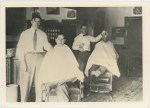 While working on a future post about some of the earliest family photos I’ve seen, I had a revelation that I’d like to share with you. One of the most exciting discoveries that I can make when going through old family photos is finding a photo of an ancestor for whom I thought no photos existed. My 3rd-great-grandfather, Horace Scott (the subject of two previous posts: here and here), is one individual whose face I figured I’d never have the chance to see. He was born in 1842, he went off to fight in the Civil War at age 20, he caught tuberculosis two years later in 1864, he was discharged a year later, and he lived only five more years, dying of tuberculosis in 1870 at the age of 28.
While working on a future post about some of the earliest family photos I’ve seen, I had a revelation that I’d like to share with you. One of the most exciting discoveries that I can make when going through old family photos is finding a photo of an ancestor for whom I thought no photos existed. My 3rd-great-grandfather, Horace Scott (the subject of two previous posts: here and here), is one individual whose face I figured I’d never have the chance to see. He was born in 1842, he went off to fight in the Civil War at age 20, he caught tuberculosis two years later in 1864, he was discharged a year later, and he lived only five more years, dying of tuberculosis in 1870 at the age of 28.
I had no photos of Horace Scott that I knew of, and I didn’t expect to ever find any, although I figured I’d keep looking just in case.
Continue reading






